Artery forceps are essential surgical instruments used to clamp blood vessels during procedures. They are a crucial tool in the medical field, and their proper maintenance is crucial to ensure their longevity and effectiveness. In this blog post, we will discuss how to properly clean and maintain your artery forceps.
As surgical instrument experts and suppliers in Malaysia, we understand the importance of using clean and well-maintained tools in the operating room. Artery forceps are a critical tool in controlling bleeding during surgical procedures, and it’s essential to know how to properly clean and maintain them to prevent the spread of infection and ensure their longevity. In this blog post, we’ll share with you the best cleaning and sterilization practices recommended for Malaysian hospitals and clinics.
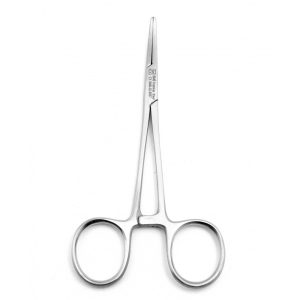
1- Pre-cleaning Artery Forceps:
Before cleaning your artery forceps, we recommend removing any debris or organic material with a damp cloth or sponge. Rinse the forceps with warm water to remove any remaining organic material. Avoid leaving your artery forceps in contact with saline solutions, as it can cause staining and damage to the instrument.
2- Cleaning Artery Forceps:
After the initial cleaning, the forceps can be sterilized using the following steps:
- Disassemble the Forceps: Disassemble the forceps by separating the two jaws. This will make cleaning easier.
- Rinse with Water: Rinse the forceps under running water to remove any debris or blood.
- Soak in a Cleaning Solution: Soak the forceps in a cleaning solution. A popular solution used in many hospitals is enzymatic detergent. This solution will break down any proteinaceous material on the forceps.
- Scrub the Forceps: Using a soft-bristled brush, scrub the forceps to remove any remaining debris.
- Rinse Again: Rinse the forceps thoroughly with water to remove any remaining cleaning solution.
- Dry the Forceps: Dry the forceps using a clean cloth or an air dryer.
In Summary: To thoroughly clean your artery forceps, use a detergent solution that’s compatible with the material of the instrument. We recommend using a pH-neutral, enzymatic cleaner that can break down proteinaceous material. Submerge the forceps in the solution and gently scrub them with a soft-bristled brush to remove any remaining debris or organic material. Rinse the forceps thoroughly with distilled water after cleaning.
3- Sterilizing Artery Forceps:
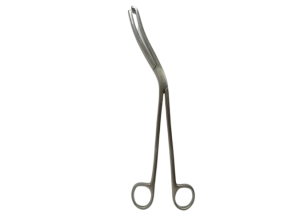
Sterilization is a crucial step in ensuring patient safety. In Malaysia, the most commonly used sterilization method is autoclaving. Before sterilizing your artery forceps, wrap or place them in a sterilization container. Once the sterilization process is complete, store the forceps in a clean, dry place until their next use.
Surgical equipment sterilization is a critical process in the medical field that ensures the safety and well-being of patients during surgical procedures. With advancements in technology, various sterilization methods have been developed to ensure the complete elimination of harmful microorganisms from surgical equipment. One of the most commonly used sterilization methods is autoclaving. In this blog post, we will discuss what autoclaving is, how it works, and why it is an effective sterilization method for surgical equipment.
Autoclaving is a sterilization method that uses high-pressure steam to kill microorganisms, including bacteria, viruses, and fungi, from surgical equipment. Autoclaves are machines that use steam under pressure to sterilize medical equipment. They are commonly used in hospitals, dental offices, and other medical facilities to sterilize surgical instruments, laboratory equipment, and other materials.
The autoclaving process involves placing the surgical equipment inside the autoclave and subjecting it to high-pressure steam at a temperature of 121°C for 15-30 minutes. The high temperature and pressure inside the autoclave create an environment that is inhospitable for microorganisms to survive. This ensures that all harmful microorganisms, including spores, are destroyed, leaving the surgical equipment completely sterilized.
Autoclaving is an effective sterilization method for surgical equipment for several reasons. Firstly, it is a fast and efficient method of sterilization that requires minimal effort. Secondly, it is a safe and reliable method of sterilization that ensures the complete elimination of harmful microorganisms. Thirdly, it is an affordable method of sterilization that is widely available in most medical facilities.
In addition to its effectiveness, autoclaving also has several advantages over other sterilization methods. For instance, it does not require the use of harmful chemicals, which can be dangerous to the environment and the health of patients and medical professionals. It also does not leave any residue on the sterilized equipment, ensuring that it is safe for use on patients.
In conclusion, autoclaving is a widely used and effective sterilization method for surgical equipment. It is a fast, efficient, safe, and affordable method of sterilization that ensures the complete elimination of harmful microorganisms from surgical instruments. Autoclaving is an essential process in the medical field that helps to ensure the safety and well-being of patients during surgical procedures. As such, it is important that medical facilities adhere to the best practices for autoclaving and other sterilization methods to ensure the highest level of patient safety.
4- Routine Maintenance of Artery Forceps:
Routine maintenance is essential to ensure your forceps are in good working condition and don’t wear out quickly. Regularly inspect your instrument for any signs of damage or wear and tear. Dropping your forceps can cause damage to the tips or handles, so always handle them carefully. If your forceps show any signs of corrosion or rust, it’s crucial to replace them immediately.
Maintaining Your Artery Forceps
Here are some tips on how to maintain your forceps:
- Inspect the Forceps Regularly: Regular inspection of your forceps is crucial to identify any signs of wear and tear or damage.
- Lubricate the Forceps: Lubricate the hinge and joint of the forceps with a surgical lubricant to prevent rust and ensure smooth operation.
- Store the Forceps Properly: Store the forceps in a dry, clean, and well-ventilated area to prevent rust and other types of damage.
- Sharpen the Jaws: The jaws of the forceps can become dull with time and use. Sharpen them regularly to ensure they clamp effectively.
- Follow the Manufacturer’s Instructions: Finally, always follow the manufacturer’s instructions for cleaning and maintenance.
Additional Tips for Cleaning and Maintaining Artery Forceps:
- Avoid using abrasive or harsh cleaning agents that can damage the instrument.
- Only use distilled or deionized water for rinsing.
- Don’t soak the instrument for an extended period.
- Use a soft-bristled brush to avoid damaging the tips or handle.
- Store the forceps in a dry and clean environment to avoid contamination.
Conclusion:
As a surgical instrument experts and suppliers, we know how important it is to use clean and well-maintained tools in the operating room. Proper cleaning and maintenance of artery forceps are essential for preventing the spread of infection and ensuring their longevity. By following the best cleaning and sterilization practices recommended for Malaysian hospitals and clinics, we can ensure that our instruments are always ready for use, promoting patient safety during surgical procedures.
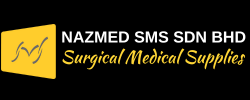
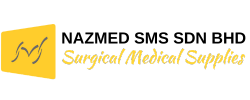



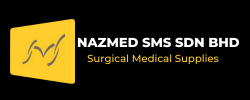

1 Comment
Protecting Surgical Instruments: Common Threats and Best Practices - Smsindus
[…] providers. It often results from exposure to moisture, harsh chemicals, or improper cleaning and sterilization methods. To prevent corrosion, instruments should be cleaned and sterilized using approved solutions and […]